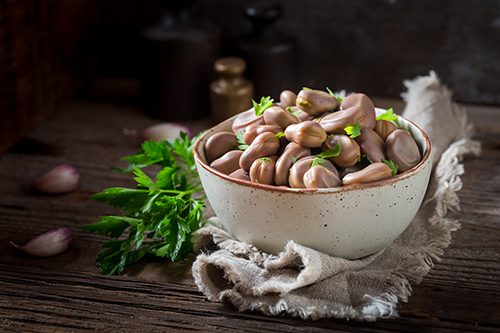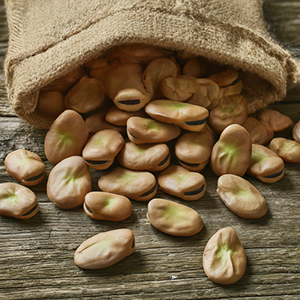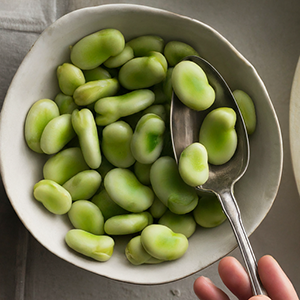Contents
Humanity has been eating broad beans for a millennium. It is possibly the oldest domesticated legume.

Broad Beans Scientific Facts
- Scientific name: Vicia faba L.
- Other names: Faba bean, Horse-bean, Field-bean, Tick-bean, Fava bean, Windsor bean.
- French: Féve.
- Spanish: Haba.
- German: Dicke Bohne.
- Description: Seeds of the fruit of the broad bean plant, a herbaceous plant of the botanical family Leguminosae whose stalks reach about a meter in height. From a botanical perspective, the fruit is a legume formed of a fleshy green pod fifteen to twenty-five cm long containing six or seven seeds (the beans themselves).
- Environment: Originally from the Middle East, they have been grown in Mediterranean countries for millennia. Its cultivation has spread throughout the hot climate areas of the world.
Broad Beans Health Benefits

Fresh broad beans contain a considerable amount of protein of high biological quality (5.6 percent), carbohydrates primarily in the form of starch (7.5 percent), and virtually no fat (0.6 percent). Among its vitamins are vitamin B1 (0.17 mg/100 grams), folates (96.3 mg/100 grams), and vitamin C (33 mg/100 grams), which contain about half that of the lemon predominate.
Iron is the most abundant mineral in broad beans (1.9 mg/100 grams), almost as much as meat. This is nonheme iron, whose absorption is enhanced by the simultaneous presence of vitamin C.
Broad beans are recommended in cases of iron deficiency anemia and during pregnancy for adolescents, athletes, and those recovering from infectious diseases or surgery.
Favism

A small percentage of Mediterranean countries’ population is intolerant to broad beans for genetic reasons. When these individuals eat these fava beans, they suffer hemolysis (destruction of the blood cells) and various other disturbances known as favism.
How to Prepare and Use Broad Beans
- RAW—When fresh and tender, they may be eaten this way, although they are not always well tolerated. Removing the skin can help prevent flatulence and digestive disturbances.
- COOKED – This is the recommended way to eat fava beans. The heat and water deactivate the small amounts of lectin (a toxic protein) they may contain, like all other legumes. Brief boiling or steaming is sufficient to destroy toxins and make them perfectly digestible.
- DRIED – Drying is the traditional means of storing fava beans, although they lose a significant portion of their vitamin content (not minerals). Dried fava beans require a relatively long cooking time.
DISCLAIMER: All content on this website is presented solely for educational and informational objectives. Do not rely on the information provided as a replacement for advice, diagnosis, or treatment from a qualified medical expert. If you are pregnant, nursing, or have any preexisting medical concerns, talk to your doctor before using any herbal or natural medicines.
REFERENCES
- George D. Pamplona-Roger, M.D. “Encyclopedia of Foods and Their Healing Power.” George D. Pamplona-Roger, M.D. Encyclopedia of Foods and Their Healing Power. Trans. Annette Melgosa. Vol. 2. Chai Wan: Editorial Safeliz, 2005. 137. Print.
- WebMD – Health Benefits of Fava Beans: https://www.webmd.com/diet/health-benefits-of-fava-beans
- The Pharmaceutical Journal: https://pharmaceutical-journal.com/article/opinion/benefits-and-dangers-of-the-broad-bean
- Hitchcock Farms: https://www.hitchcockfarms.com/blog/fava-beans-nutrition-health-benefits
